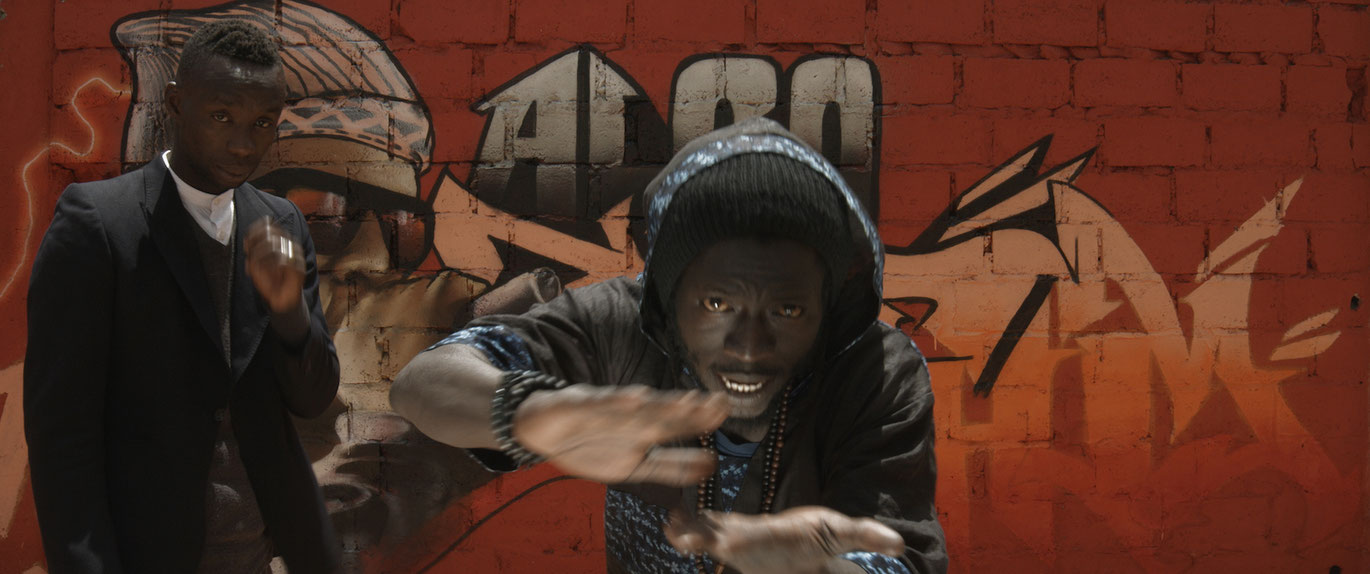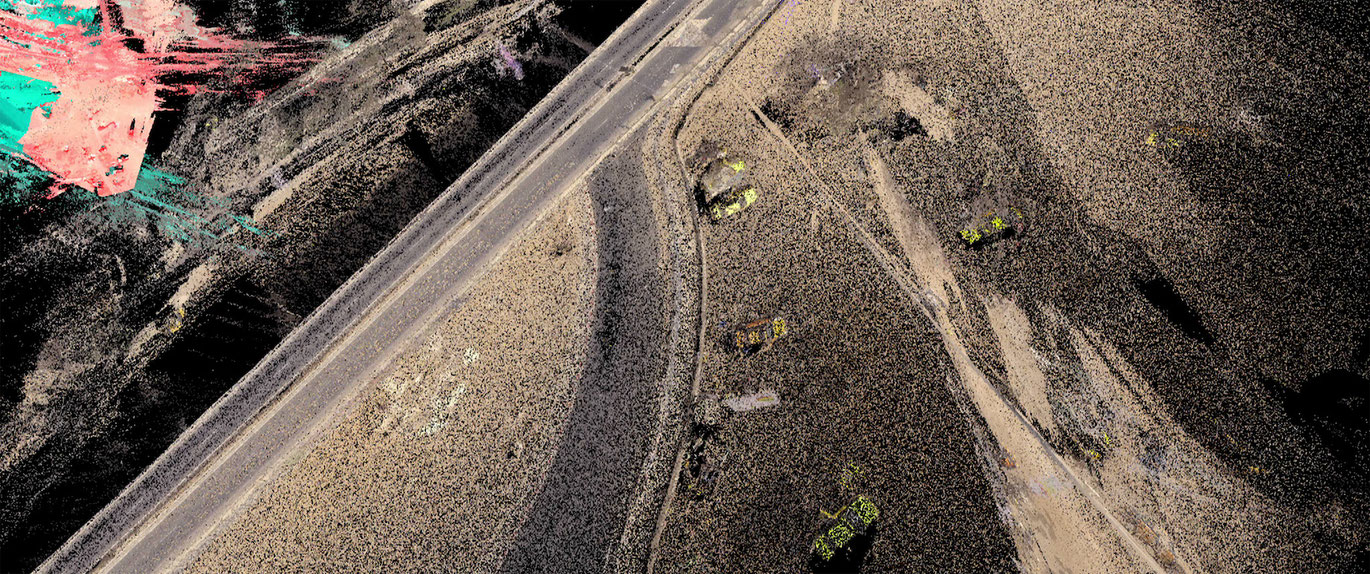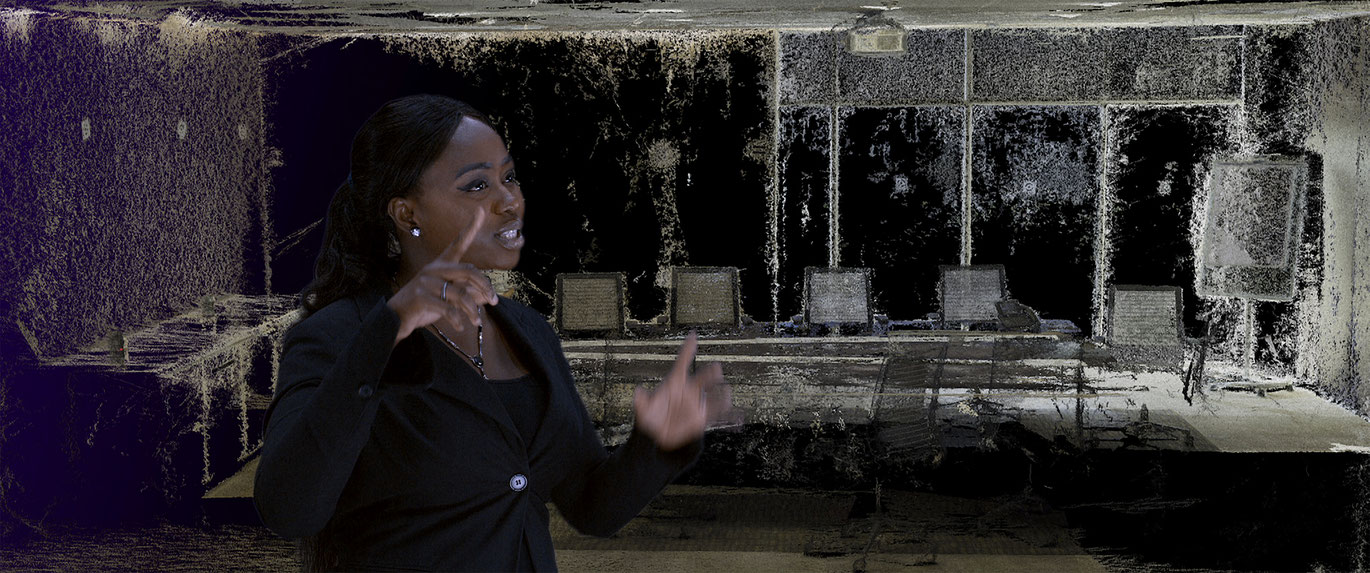Algo-Rhythm
Ein Daten Musical gegen automatisierte Propaganda!
Eine Datenanalyse-Firma namens Cambridge Analytica löste zuletzt mehrfach einen Skandal aus. Man schreibt ihr eine gewichtige Rolle bei Wahlentscheidungen in den USA (Präsidentenwahl 2016) und in England (Brexit-Referendum) zu. Die Nutzer von digitalen Netzwerken wurden gezielt aufgrund illegal erworbener persönlicher Daten mit Disinformation und hetzerischer Propaganda adressiert. In Algo-Rhythm taucht eine Firma namens Data Analytica auf, die das entsprechende Prinzip verallgemeinert: Wahlen werden heute nicht mehr so sehr durch Stimmenkauf, sondern durch Algorithmisierung von Information entschieden. Überraschend ist der Ort, an dem Manu Luksch diese Prozesse mit ihrem Film situiert: Der Senegal gilt als einer der erfolgreichsten afrikanischen Demokratien, in der politisch engagierter Hip Hop immer wieder in der Rolle des Watch Dogs erfolgreich Widerstand gegen Machtmißbrauch mobilisiert.
In Algo-Rhythm wird das westafrikanische Land zu einem Modellfall für künftige Auseinandersetzungen um politische Repräsentation und Willensbildung. Zwei Kandidatinnen um das Präsidentenamt stehen einem Mr. X von Data Analytica gegenüber, der Werbung für seine Methoden macht. Der Diskurs hat die Form eines Raps oder einer Rap Battle. Manu Luksch lässt eine politische Landschaft entstehen, zu der auch traditionelle Figuren (eine Griot-Frau) und das Volk gehören. Die Form des Austauschs ist gerhymte, von digital-synkopierten Beats vorangetriebene Sprache. Im Bildhintergrund wird dabei die ganze Zeit anschaulich, wovon die Rede ist: Mr. X, der Aladin der Datenanalyse, lässt die Wirklichkeit in Datenpunkte zerfallen. Manu Luksch spielt mit Luftaufnahmen und anderen Umgebungsbildern die Datenmanöver durch, die auf einer anderen Ebene auch mit den Netzwerken (mit der "Droge der Nation") ablaufen: photogrammetrische und andere informationslogische Bildgenerierungsverfahren lösen die alte (politische) Welt der analogen Repräsentation durch Stimmabgabe und staatskörperliche Vertretung in eine Wolke der Auslesung auf. (Bert Rebhandl)
Mukul Patel about Algo-Rhythm
Multiple approaches, tools and techniques were chosen to reflect the multilayered content of the work. A major part of the imagery was created through photogrammetry, a method of `computational photography` in which algorithms are used to calculate the path of the ray that hits the image sensor. Our use of computational photography to reveal previously hidden information in an image points to the use of Ai on personal datasets to reveal previously hidden information about individuals or groups.
The computational photography element of the work was carried out using low-cost tools and DIY/hacker approaches as far as possible, to demonstrate that in the `AI era`, the incumbent powers do not have a monopoly on computation. Our image capture equipment included a DSLR, a pair of compact video cameras with 235° fisheye lenses mounted back-to-back to capture a complete 360° field of view, a drone-mounted 4K video camera, and a Microsoft Kinect motion sensing game input device.
Photogrammetry:
Stills from the DSLR and sequences of stills from the 360° immersive video and the drone camera were fed into photogrammetry software that stitched them together and computed depth information, to create a large 3D point cloud or polygion mesh. The Kinect`s time-of-light` camera illuminates nearby objects with pulses of IR light, and calculates a depth map (3D image) of the exposed surfaces from the timing of the reflected pulse.
The resulting motion and depth information is used to construct point clouds (a set of points representing the 3D extent of the scene) and polygonal meshes. The Kinect sensor can produce point clouds/meshes at film-like rates, resulting in a a moderate resolution video file that can be `moved around` in three spatial dimensions. Higher resolution static 3D images (of several million points/polygons) are produced from a series of images taken by a moving camera.
These still or motion photograms (points and meshes) can be combined with 2D camera images to create a photorealistic video augmented with depth information (a 3D video, which can be navigated around). We also processed this additional depth/motion data to distort the 2D images in ways that suggest the deduction of additional information, such as the intention or character of a person in the frame. By decimating (simplifying) the polygonal mesh of a person, we extract their essential character – in the same way that algorithms reduce us to a finite set of correlated data points that supposedly reveal who we really are. Facebook – and Visa – know you better than you know yourself. But, like the algorithms managing our societies, our photogrammetric algorithms produce hollow shells of characters… (Mukul Patel)
Algo-Rhythm
2019
Österreich, Großbritannien, Senegal
14 min
Experimental, Animation/Computeranimation, Essay
Wolof, Französisch
Englisch, Deutsch, Französisch



